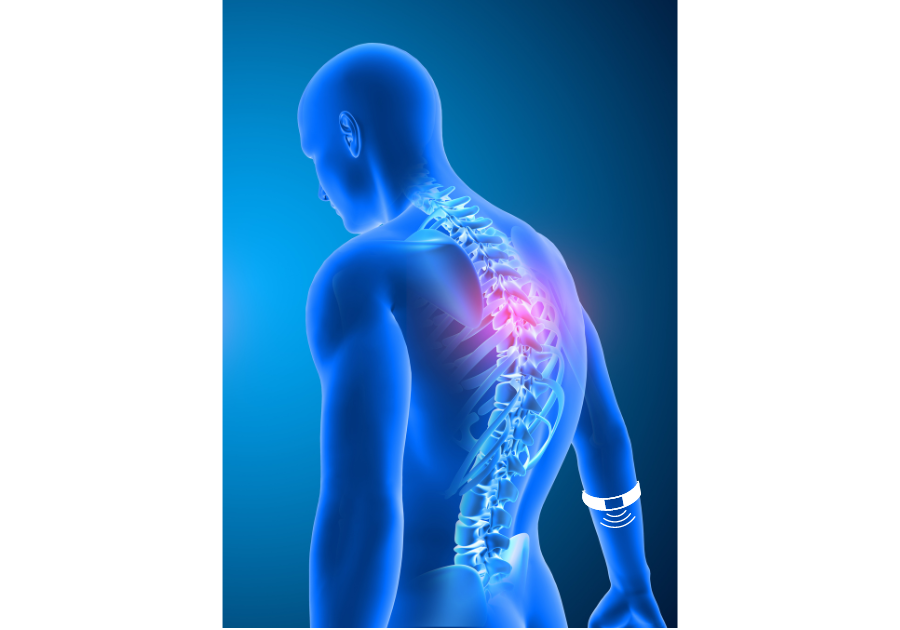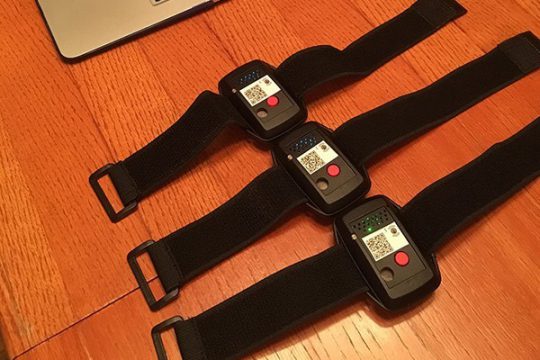Is Haptic BioFeedback Helpful in Correcting Unsafe Behaviors at Work?
June 5, 2023
Author: Tom West, SPHR, SHRM-SCP, COSS
VP OF Marketing, MākuSafe
Haptic biofeedback is a term used to describe the use of physical sensations or vibrations to provide real-time feedback to a user about their behavior. This technology has been touted as a way to promote behavior change, such as encouraging people to sit up straight or reminding them to take deep breaths. However, the effectiveness of haptic feedback in promoting lasting workplace behavior change should be carefully considered. In this article, we’ll explore why haptic feedback may be unlikely to result in lasting or meaningful behavior change, and may actually become a nuisance or be disregarded in a short time.
Reinforcement Theory
First, it is important to understand why haptic feedback is thought to be effective. Research is abundant regarding reinforcement theory, different types of reinforcement, and the effectiveness of each both short and long term. The theory behind haptic biofeedback is that it creates a direct link between a behavior and a physical sensation. When a person performs a desired behavior, such as sitting up straight, they receive a positive physical sensation, such as a vibration or a gentle pressure. If pleasant to receive, this positive feedback is thought to reinforce the behavior and create a habit over time. However, the delivery of negative feedback to correct or change behavior should be carefully considered, ESPECIALLY at work. B.F. Skinner, The Hawthorne Studies, and a long history of behavioral research have taught us what works in the real world for more than 120 years now.

Positive reinforcement, such as telling someone you appreciate their effort, is useful in shaping or modifying behavior modification by itself. Leaders should practice this all day, every day! Enjoying a small chocolate as a reward for staying on your diet, works. While negative reinforcement, the delivery of negative stimuli, punishment, or consequences in an attempt to modify unproductive behavior rarely has lasting effect – maybe short-term compliance at best could be expected. But in order to be useful at all, a century of research indicates that it needs to be used sparingly, prudently, and most importantly it needs to be combined with other forms of feedback rather than used alone.
Results of Haptic Feedback & Challenges
Therefore, there are several reasons why haptic biofeedback aimed at changing workplace behavior or unsafe practices is unlikely to result in desired or lasting behavior change. First, if positive feedback is provided at all, it is often too subtle or too brief to be effective. It is much more common for no positive stimulus to be provided by technology. Tech alone generally isn’t very capable of making you feel good. It certainly can’t measure up to your supervisor telling you specifically that they appreciated your extra effort and contributions on a project, and encouraging you to keep it up! Rather, the most common is the approach that delivers a buzz or audible sound, or both simultaneously. This is negative reinforcement, being solely relied upon, in an effort to change an undesirable, unsafe or unproductive action or movement. For example, a brief vibration or buzz to the back of your neck or on your waist when lifting improperly.
The realities of haptic feedback are numerous and easy to see:
- Bells, buzzers and alerts without context can certainly be perceived as negative
- They are not enough to discourage a behavior, especially long term
- The worker may not know what behavior is desirable but instead is only trying to eliminate the delivery of something unpleasant
- The worker may be distracted by it
- Over time, the worker is likely to simply stop paying attention to the feedback
- The feedback is often seen as intrusive or annoying
- The physical sensations can be distracting or uncomfortable, especially if they are repetitive or occur at unexpected times
- Workers may disable the feedback or ignore it, which defeats the purpose and may create more hazardous issues
- It won’t be used or worn, fairly quickly. No tool will be helpful if it isn’t used
Maybe most significant is the fact that haptic biofeedback is often sold as an easy remedy, and used in isolation, without any other supporting tools or strategies. If supervisory leaders historically have encountered challenges when delivering enough positive reinforcement, deploying a tech device with haptic biofeedback could further highlight these deficiencies.
Communication and Expert Coaching is Key
Organizations desirous of piloting tech solutions are becoming more and more common, and generally result in the same experience. A worker may be given a tool by their company that vibrates when they are at risk of an ergonomic injury, but they may not receive any other guidance on how to improve their risk. Even if orientation is provided, and the company leadership communicates that this is in the workers best interests, “because we care about you!.” The lack of context or support can make it difficult for workers to understand why the behavior change is important or how to correctly make a desirable change, and sustain it. In fact, in the realm of workplace safety, this is PRECISELY why we employ EHS professionals, ergonomists, and industrial hygienists. Their job function is to identify hazards and risks, conduct analysis, and design or implement corrective actions to ensure that desired results are attained. Alternatively consider that, rather than rules or policies (i.e. administrative controls), today the best case scenario would be re-engineering the work itself in order to eliminate or modify unsafe practices or movements and also optimize productivity and efficiencies.
Lasting Behavior Change
Finally, there is little evidence that haptic biofeedback is effective in promoting lasting behavior change. While there have been some studies that suggest that haptic biofeedback can be effective in promoting certain behaviors, such as improving posture, these studies are often small and short-term. There is little evidence that haptic biofeedback can create lasting habits or that it is effective in promoting behavior change over the long-term.
In conclusion, while haptic biofeedback may seem like an appealing tool for promoting behavior change, an easy button, there are several reasons why it is unlikely to result in lasting change. The feedback provided by haptic biofeedback is often too subtle or too brief to be effective, and the physical sensations can be intrusive or annoying. Without other supporting tools or strategies, haptic biofeedback may not be enough to promote lasting behavior change. Finally, there is little evidence that haptic biofeedback is effective over the long-term. As a result, it is likely that haptic biofeedback will become a nuisance or be disregarded in a short time, or worse cause distraction resulting in more of a risk than existed in the first place. No organization wants their employees to feel unvalued or to have a negative impact on organizational culture and safety mindset. Trials of tech that are based on a bad idea can have a lingering effect and get in the way of making improvements that actually work.
As Covey said long ago, “begin with the end in mind!”. Unless your organization knows what it’s trying to achieve, and is selective about tools that can help it get there, you may be making things ultimately harder on yourself.
If you are interested in learning more about wearable safety technology that promotes positive safety culture, check out these free resources or schedule a demo.
About MākuSafe
MākuSafe® is an award-winning wearable safety technology that provides real-time EHS intelligence aimed at preventing prevalent and costly safety incidents and work comp claims. The patented MākuSafe® system combines a robust safety management software platform with innovative armbands which carry a wide array of IoT enabled sensors providing actionable intelligence regarding; strain & exertion, MSD prevention, noise exposure, air quality, and more. MākuSafe collects nothing personal or biometric, and improves near-miss reporting. MākuSafe is proven to reduce claims frequency by more than 50%, and reduce claims severity by as much as 90%.





